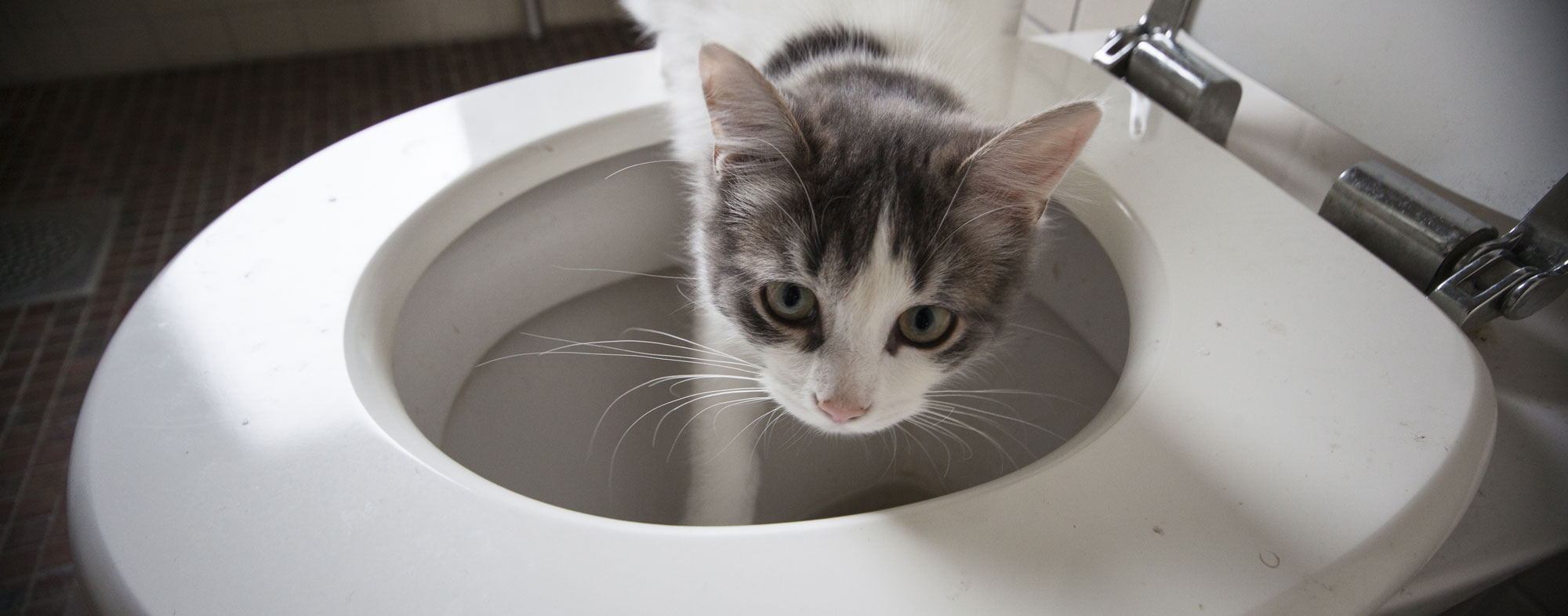We have noticed this post on Can You Flush Cat Poop Down The Toilet? directly below on the net and thought it made sense to discuss it with you on this site.

Intro
As cat proprietors, it's important to bear in mind just how we deal with our feline close friends' waste. While it might appear hassle-free to purge pet cat poop down the commode, this practice can have damaging repercussions for both the environment and human wellness.
Environmental Impact
Purging feline poop introduces unsafe pathogens and parasites into the water, presenting a substantial risk to aquatic communities. These contaminants can negatively impact aquatic life and concession water quality.
Wellness Risks
In addition to environmental issues, purging feline waste can additionally posture wellness threats to people. Pet cat feces might have Toxoplasma gondii, a bloodsucker that can cause toxoplasmosis-- a potentially severe health problem, especially for pregnant women and individuals with damaged body immune systems.
Alternatives to Flushing
Fortunately, there are safer and much more responsible ways to throw away feline poop. Think about the complying with choices:
1. Scoop and Dispose in Trash
One of the most usual approach of disposing of feline poop is to scoop it into a naturally degradable bag and toss it in the trash. Make certain to utilize a dedicated clutter scoop and throw away the waste promptly.
2. Use Biodegradable Litter
Opt for biodegradable feline litter made from products such as corn or wheat. These trashes are eco-friendly and can be safely dealt with in the trash.
3. Hide in the Yard
If you have a lawn, think about burying pet cat waste in an assigned area away from vegetable gardens and water sources. Make certain to dig deep adequate to stop contamination of groundwater.
4. Mount a Pet Waste Disposal System
Invest in an animal waste disposal system especially created for cat waste. These systems make use of enzymes to break down the waste, decreasing smell and ecological effect.
Verdict
Responsible animal possession prolongs beyond supplying food and shelter-- it also entails proper waste management. By refraining from flushing cat poop down the toilet and going with alternative disposal methods, we can minimize our environmental impact and secure human health.
Why Can’t I Flush Cat Poop?
It Spreads a Parasite
Cats are frequently infected with a parasite called toxoplasma gondii. The parasite causes an infection called toxoplasmosis. It is usually harmless to cats. The parasite only uses cat poop as a host for its eggs. Otherwise, the cat’s immune system usually keeps the infection at low enough levels to maintain its own health. But it does not stop the develop of eggs. These eggs are tiny and surprisingly tough. They may survive for a year before they begin to grow. But that’s the problem.
Our wastewater system is not designed to deal with toxoplasmosis eggs. Instead, most eggs will flush from your toilet into sewers and wastewater management plants. After the sewage is treated for many other harmful things in it, it is typically released into local rivers, lakes, or oceans. Here, the toxoplasmosis eggs can find new hosts, including starfish, crabs, otters, and many other wildlife. For many, this is a significant risk to their health. Toxoplasmosis can also end up infecting water sources that are important for agriculture, which means our deer, pigs, and sheep can get infected too.
Is There Risk to Humans?
There can be a risk to human life from flushing cat poop down the toilet. If you do so, the parasites from your cat’s poop can end up in shellfish, game animals, or livestock. If this meat is then served raw or undercooked, the people who eat it can get sick.
In fact, according to the CDC, 40 million people in the United States are infected with toxoplasma gondii. They get it from exposure to infected seafood, or from some kind of cat poop contamination, like drinking from a stream that is contaminated or touching anything that has come into contact with cat poop. That includes just cleaning a cat litter box.
Most people who get infected with these parasites will not develop any symptoms. However, for pregnant women or for those with compromised immune systems, the parasite can cause severe health problems.
How to Handle Cat Poop
The best way to handle cat poop is actually to clean the box more often. The eggs that the parasite sheds will not become active until one to five days after the cat poops. That means that if you clean daily, you’re much less likely to come into direct contact with infectious eggs.
That said, always dispose of cat poop in the garbage and not down the toilet. Wash your hands before and after you clean the litter box, and bring the bag of poop right outside to your garbage bins.
https://trenchlesssolutionsusa.com/why-cant-i-flush-cat-poop/

Do you appreciate more info about Can You Flush Cat Poop Down The Toilet?? Place feedback below. We'd be delighted to know your feelings about this blog entry. We are looking forward to see you back again later on. Don't hesitate to take the opportunity to promote this write-up if you liked it. I value reading our article about How to Dispose of Cat Poop and Litter Without Plastic Bags.
Book Appointment
Comments on “Prevent Bathroom Emergencies: Never Flush Cat Poop Down Your Toilet - Expert Guidance”